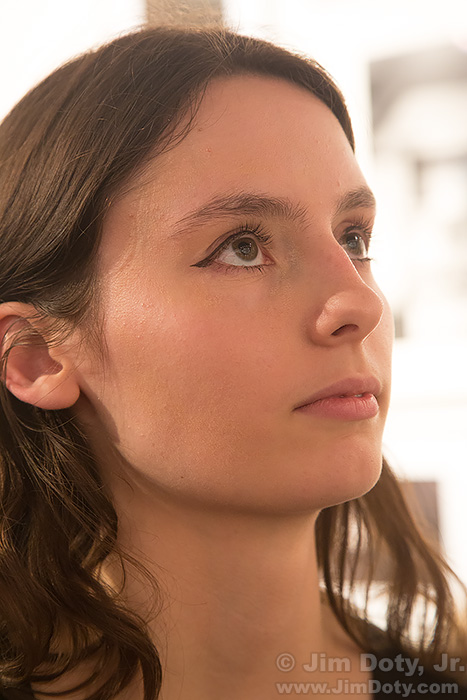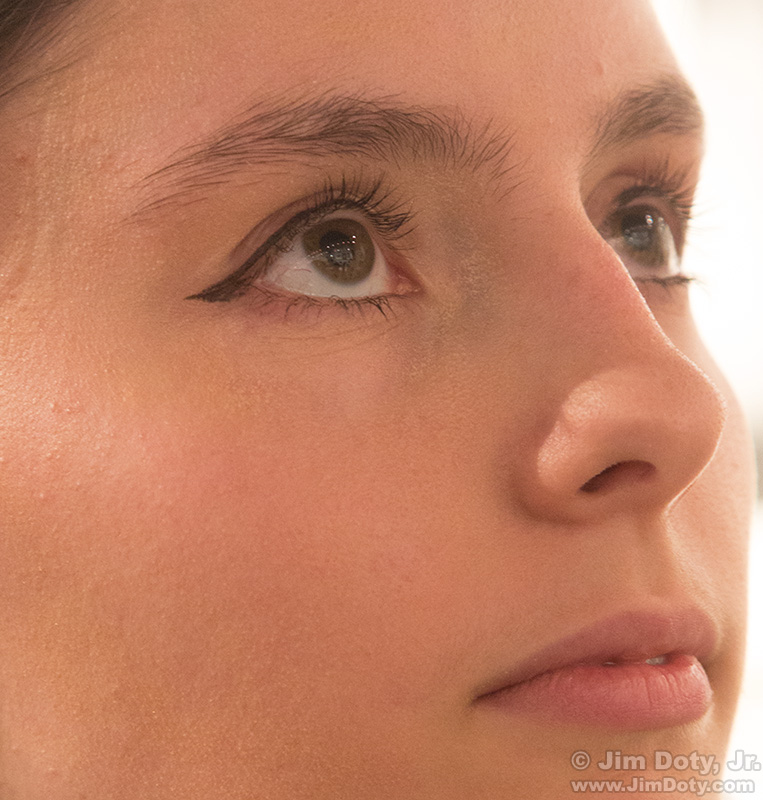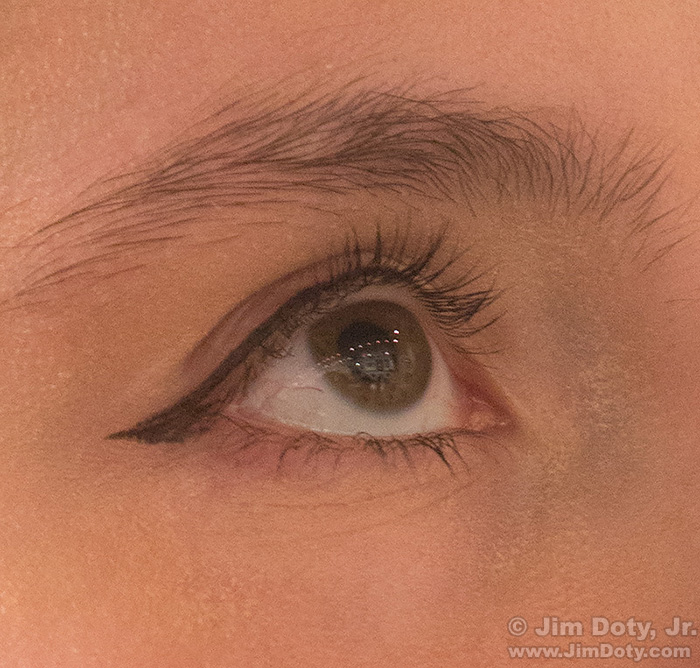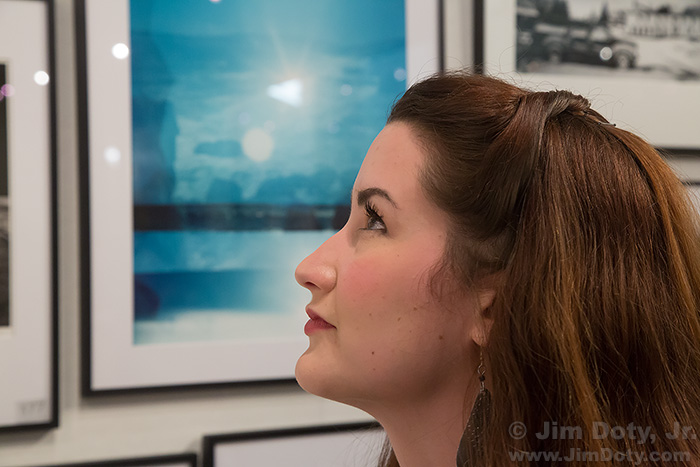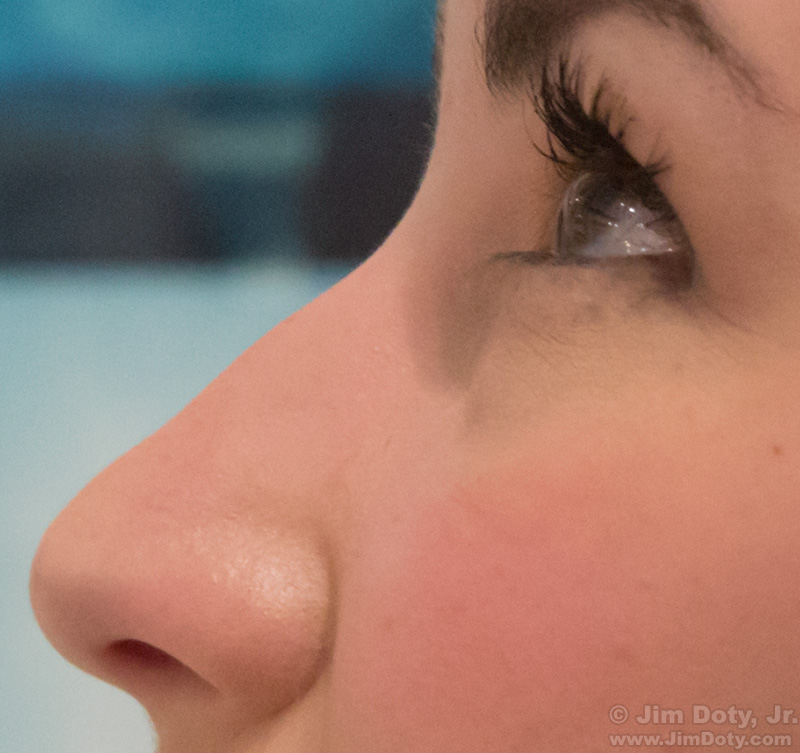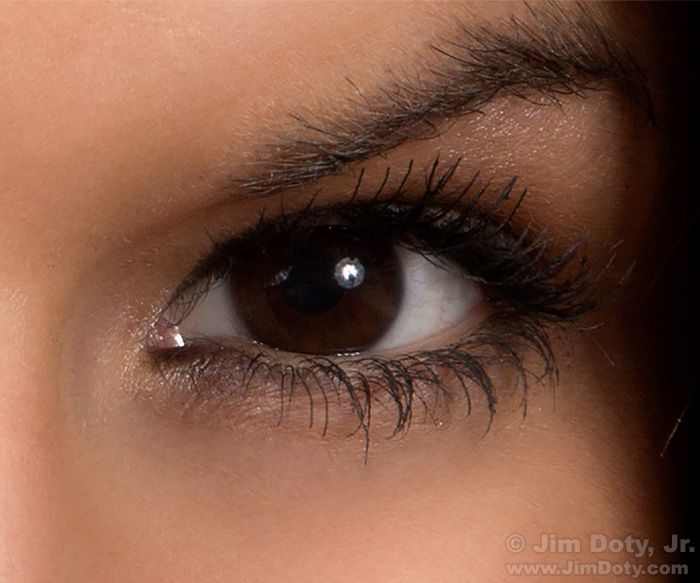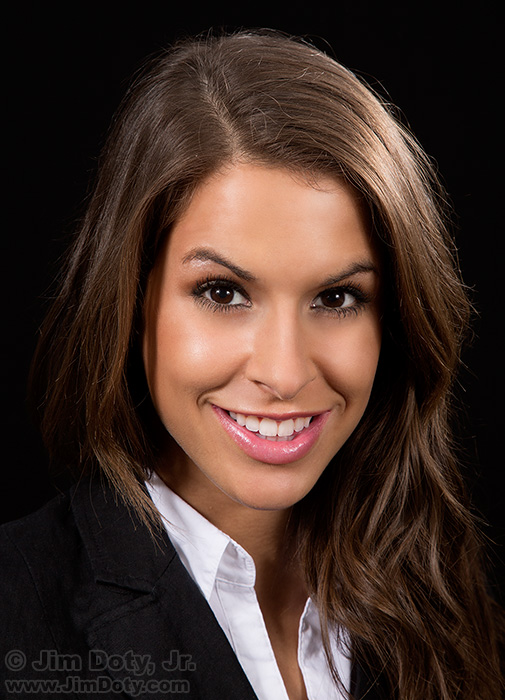When you need to shoot an event without a flash in low light, high ISO settings are the rule of the day. I have some very good news, and some bad news.
Note: Click on any image in this article to see a larger version. When WordPress shrinks an image to fit the available page space and screen size, some softening of the image occurs. So click on each image to get a better idea what it looks like.
I grabbed this image from the photos I took at the recent photography exhibit and auction at the Stivers School for the Arts in Dayton Ohio. I did this as a no-flash, hand-held camera type of event. Light levels were relatively low. Even at ISO 3200 many of my photos were around 1/30 second.
First the good news. Digital noise is much less obvious than it used to be, and way better than it ever was with film. Take the photo above. At ISO 3200, the digital noise is much less obvious than it would have been with cameras from just a few years ago. This image holds up quite well and the noise is barely noticeable in a web sized image.
As we move in closer the image file still looks pretty good. It even holds up well in a small to medium sized print. When it comes to event photography a reasonably good print is better than no print at all.
If we zoom in much closer the noise is more obvious. It is most noticeable in the eye where the white of the eye and the iris meet (click on the image to see this). Still, it is remarkably good compared to ISO 3200 images from not that long ago. Film was no where near this good. The best slide films pushed to ISO 3200 look quite awful in comparison with grain that looked like popcorn. Color negative films in the ISO 1600 and ISO 3200 range were nothing to write home about.
To have noise this minimal requires dead on exposures. If you underexpose a high ISOÂ digital image the noise get significantly worse. This is also true to some extent with low ISO digital images. Just one more reason professional photographers are so fussy about exposure.
But there is a downside to all of this and that is the bad news. Although the noise doesn’t jump out at you, a certain visual intensity is missing from this photo. It is not as crisp. That could partly be due to to the slow shutter spend (1/30 second) and longer lens (105mm), but a careful look at the rest of my photos from the evening would indicate the same shortcoming.
This is one of my best images of the evening. This young woman was in a brighter area of the room so I could boost the shutter speed to 1/100 second.
But if you view the file up close, as nice as it is, it is still lacking a certain something.
Now look at this closeup. There is more snap to the image. The color is better. It is more vibrant. You can even see the sections of the flash umbrella reflected in the eye. This is a studio image at ISO 100 using studio flash units. As nice as the ISO 3200 files are, they just don’t stack up against an ISO 100 image. The noise that is visible in the whites of the eyes of the ISO 3200 images above is gone from this image.
So there is still no photographic free lunch. ISO 100 is better than ISO 3200. An ISO 3200 image also has less dynamic range than an ISO 100 image (it has a more limited tonality capture range from light to dark). But ISO 3200 is so much better than it used to be. So when we have to shoot events at ISO 3200, that is very good news indeed.
Photo Information:Â Both photos: Canon 5D Mark III. Canon EF24-105mm f/4L IS USM lens.Â
Event photo: 105mm focal length. 1/30 sec, f/6.3, ISO 3200. No flash.Â
Studio photo: 98mm focal length. 1/60 sec, f/11, ISO 100. Studio flash units bounced out of umbrellas.

